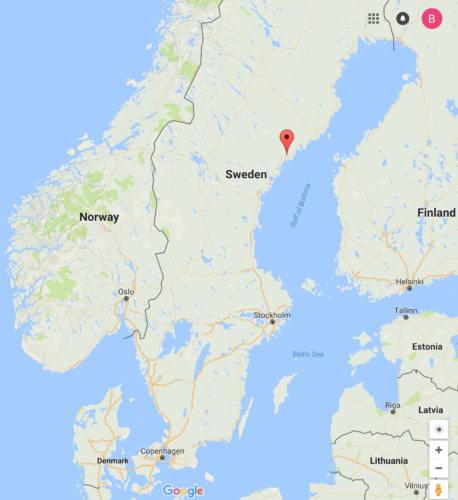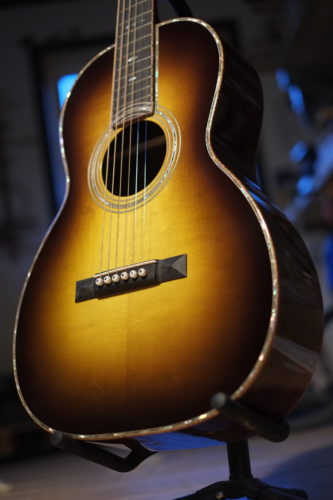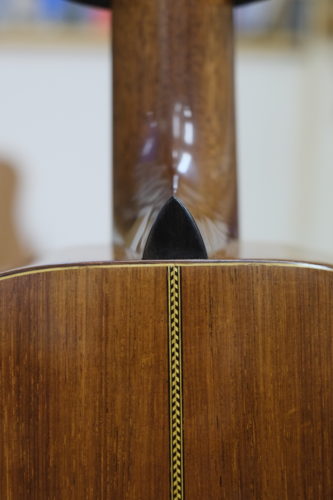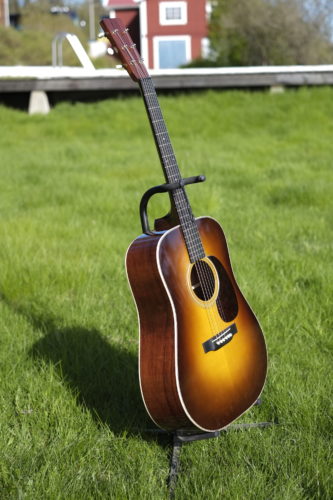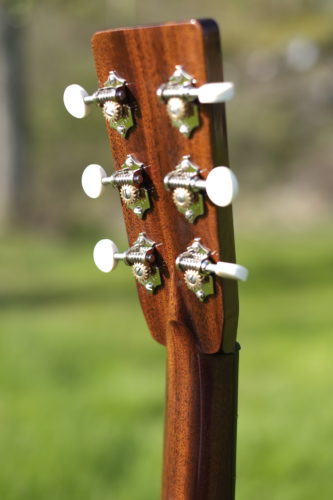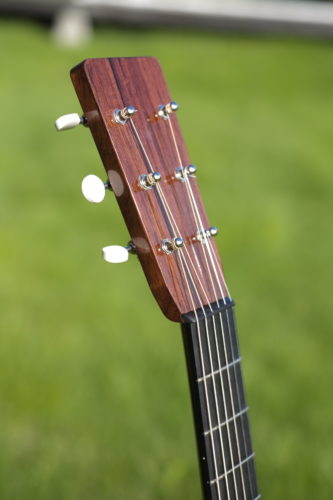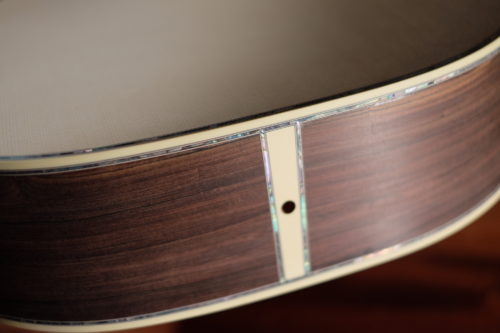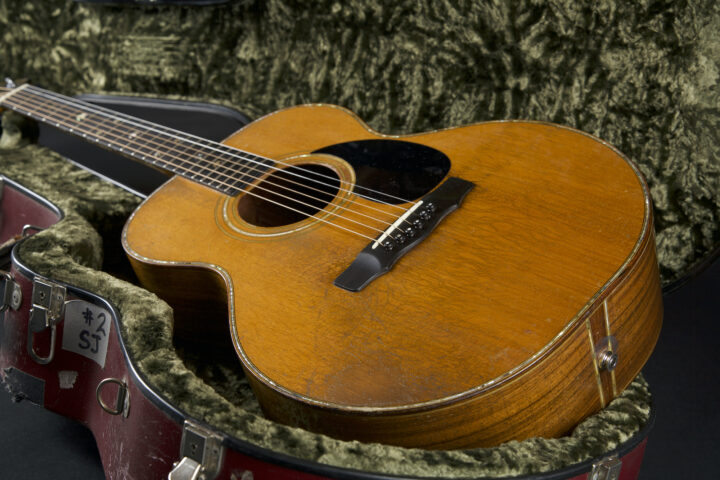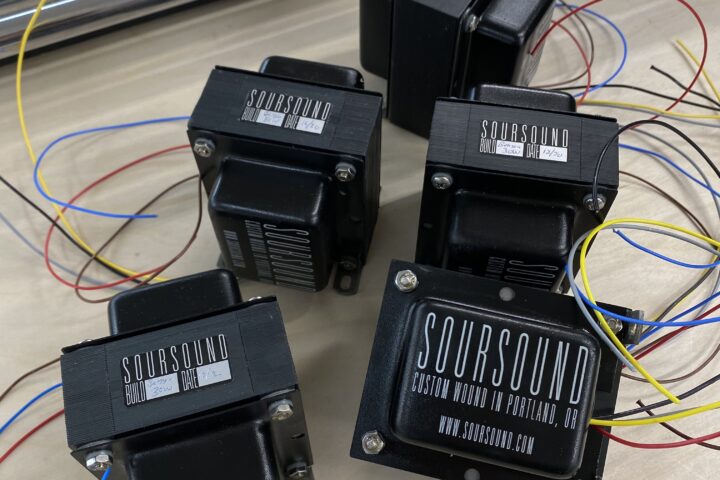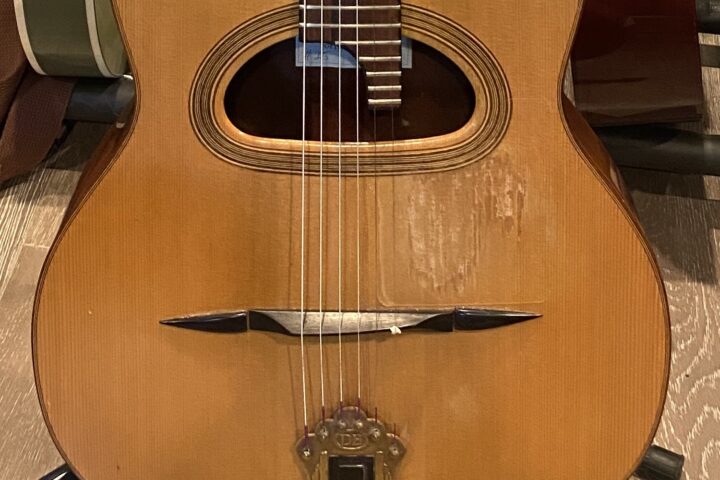Kalamazoo, Michigan; Nazareth, Pennsylvania; Arnäsvall, Sweden? You have no idea where Arnäsvall is, do you? (Though, how many folks can point to Kalamazoo or Nazareth on a map? Geography isn’t our strong suit…) Arnäsvall is 541 kilometers (~336 miles) north of Stockholm, a 5 hour, 40 minute drive on the E4 (a toll road, by the way), and it’s the small town that Per Marklund calls home. Per’s tale, meanwhile, is just about as off the beaten path as Arnäsvall, but probably familiar to a few of us: a guitar player with a crafty streak, looking for something he can’t find, figures out how to build it for himself. Fast forward a few years and he’s making his living building gorgeous guitars. We reached out to him to talk abut Marklund Guitars for our latest Bench Press…
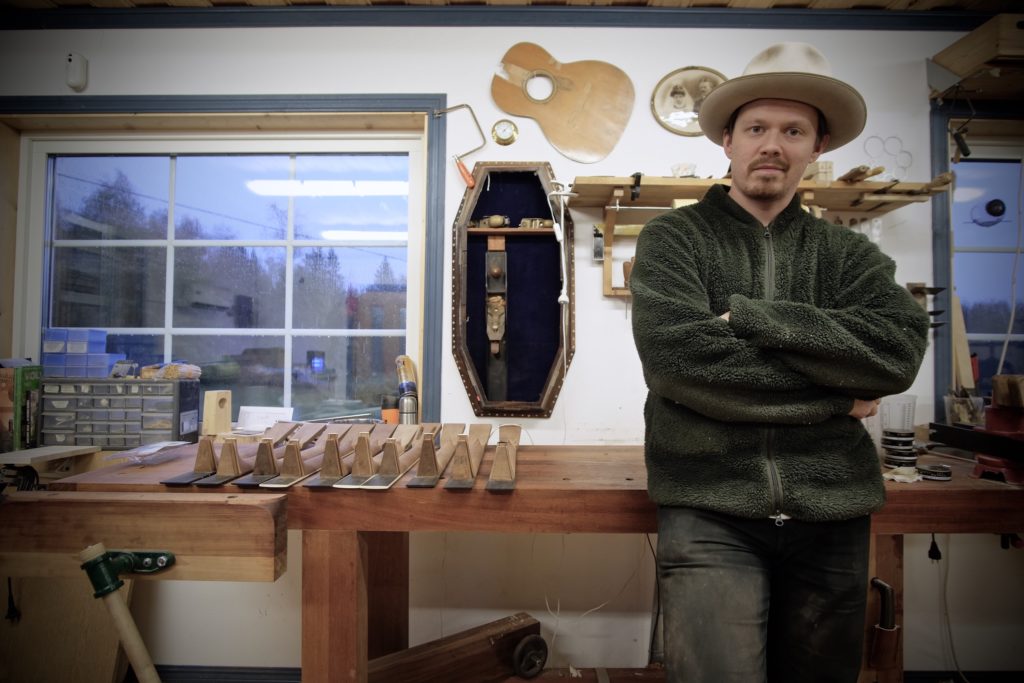
Fretboard Journal: What’s on your bench right now?
Per Marklund: I just finished the woodworking part on a batch of 10 guitars, which are all in the spray booth right now. I build in batches because I prefer to glue all braces and close the boxes during winter when the air is dry. That makes a dry climate the natural state of the guitar, which makes them much less prone to cracking when it’s dry, which is a great advantage if you live in the woods in northern Sweden (or anywhere else where the climate can be dry).
As a side project I’m working on my ’37 Martin D-18 shadetop, which was a wreck when I got it. It had a cracked original bridge that was almost falling off. The neck was poorly glued and the dovetail pocket was filled to the brim with with regular wood glue, multiple crack repairs including a side reinforcement strip from the waist all the way to the end block that was made out of… denim. The biggest challenge was probably the thick overspray, which I carefully had to scrape off. I got lucky though because there was a layer of tinted lacquer before the overspray–that tinted lacquer was my thickness gauge. As soon as I saw that disappear stopped. I have a bit more work on it before I can call it done but its fully playable as it is. And what a joy and a privilege it is to be able to play it every day.
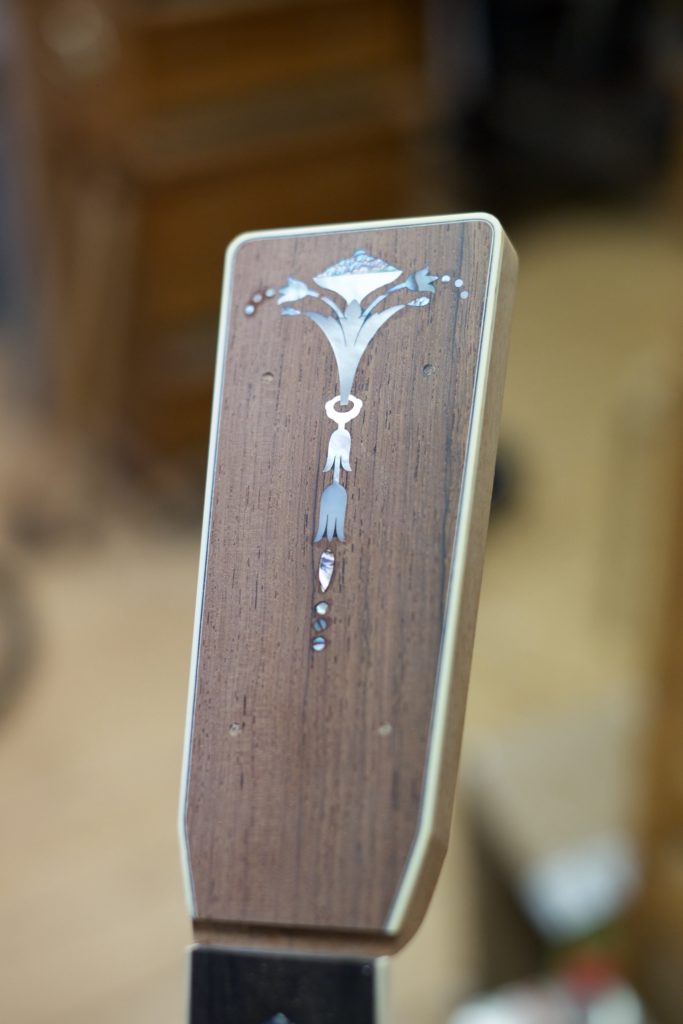
FJ: How did you get started?
PM: It all started in 2010 when I was visiting a friend in Stockholm. I had been learning to play for about a year on a guitar that I borrowed, so I wanted to get my own. I knew I wanted a dreadnought so I tried all I could find. At a store where I tried at least 15 guitars a guy from the staff notices that I was only trying dreadnoughts, so he handed me a guitar and told me to try it. It was an old, pretty beat up Martin. I knew Martin was a good brand but knew nothing about the vintage ones. I played a G major chord and fell in love. My budget was about 10,000 SEK [~$1,200] and most old acoustics I’d seen for sale were around 2,000 SEK–I thought I was going to have plenty of money left over. I told the guy that I wanted it. He replied, “That’ll be 400,000 SEK [~$49,000].” The guitar was a ’37 Martin D-18. I had to continue my search but didn’t find a single guitar that could compare to that old Martin. So I thought that if no one else makes it, I’ll just make it myself. That’s the first time I thought about building my own guitar.
A few months later I was visiting my old Arts & Design teacher and one of his students was building an acoustic guitar. I didn’t think it looked too complicated, or I tried to convince myself of that at least. One of my biggest concerns was finding materials. I found some online but didn’t get over the threshold of ordering it. So I asked the student where he bought his materials. He told me about Östmans Musik, a local music store. I live in a very small town in northern Sweden and to this day I don’t know of any other place in this country that sells tonewood. So I jumped in my Volvo Amazon and went to the store. 20 minutes later I walk out with a pile of wood in my arms and no idea how to turn it into a guitar. I realized I didn’t own one single tool, had no woodworking experience, no workshop space. I called my arts & design teacher, who has experience with instrument making. He offered to help me out and lend me a few tools. But I made my first guitar pretty much like Wayne Henderson: with a pocket knife. But I cheated a little bit because I had a chisel as well. On August 11, 2011 I tuned the stings up to pitch on the first guitar I ever built.
FJ: Where do you find inspiration?
PM: When I started out building guitars my biggest inspiration was the old D-18 I told you about. I wanted to build a guitar that was as good as that, but quickly realized there was more to it than that. Ever since I was kid I’ve had a strong desire to create. I’ve gone deep into every imaginable way of painting, sculpting and so on. But I’ve never been able to get what was in my head to a finished piece that I was 100% happy with, and that doesn’t work for me. I’ve thrown most of my production in the trash in rage. I think the main reason is that all of these mediums allowed me to work fast, so I worked so fast that I didn’t give myself a chance to be happy with what I made. So when I started building guitars the first thing I noticed is that I knew instantly how the wood would respond to what I did. When I carved the braces I knew in which direction to carve, when to stop and how to deal with any trouble that came up. The nature of wood didn’t allow me to work in the same fast manner as the mediums I had worked with before did. It slowed me down. And when I did that something happened. I realized when finished my first neck that it was the first time the image I had in my head corresponded 100% to what I had in front of me. I finally found what I had searched for for so long. I think that is one of the most inspirational moments in my life, one which I still go back to now and then to gather energy when I have a bad day.
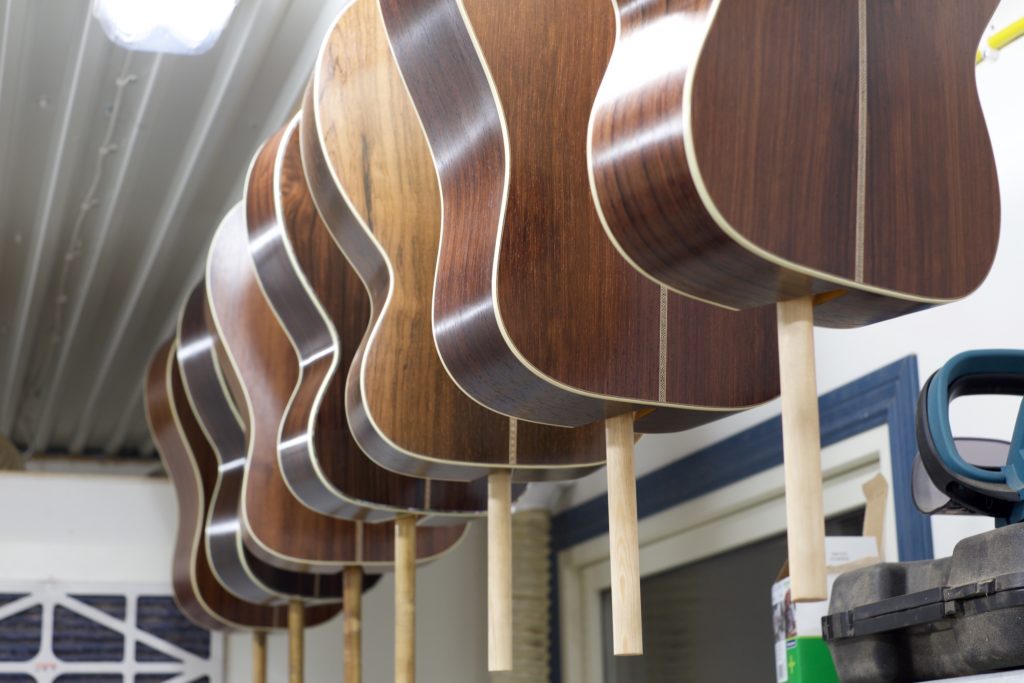
Another big inspirational source for me is other builders–there are so many great builders out there that finding inspiration is easy. But my biggest inspiration and influence has been and still is Willi Henkes. I first came to know about him when reading some of his posts on the Unofficial Martin Guitar Forum. The guitars Willi and Rudie are making are in my opinion some of the best guitars out there, but the main thing is that I understood what Willi was talking about in his posts and that his philosophy made sense to me. So I put my building on hold for a couple of months, read pretty much every post he has written, then got to work again. During that time I got my first two orders–two 12 fret dreadnoughts (thanks Frank and Randy!)–and felt pretty confident because of the knowledge I gained from Willi’s posts. But there were a few question marks to iron out so I decided to contact him. By then he was already my idol so I was a bit nervous that I wouldn’t get an answer, but luckily I did. He helped me out more than I could wish for, sourcing materials, providing me with plans and unselfishly sharing his knowledge about guitar building with me. I’ll be forever grateful.
And speaking about sharing knowledge, being able to do that someday in the future is a big source of inspiration for me. Someday I’ll be gone and everything I’ve learned will be for nothing if I haven’t shared my knowledge with someone. If every guitar builder has to reinvent the wheel the art of guitar building will not progress. If someone is willing to learn I feel that it is my obligation to share my knowledge. So in the future I hope to get an apprentice, and as soon as that apprentices skills get better than mine, I’m happy. I could also use some company in the shop.
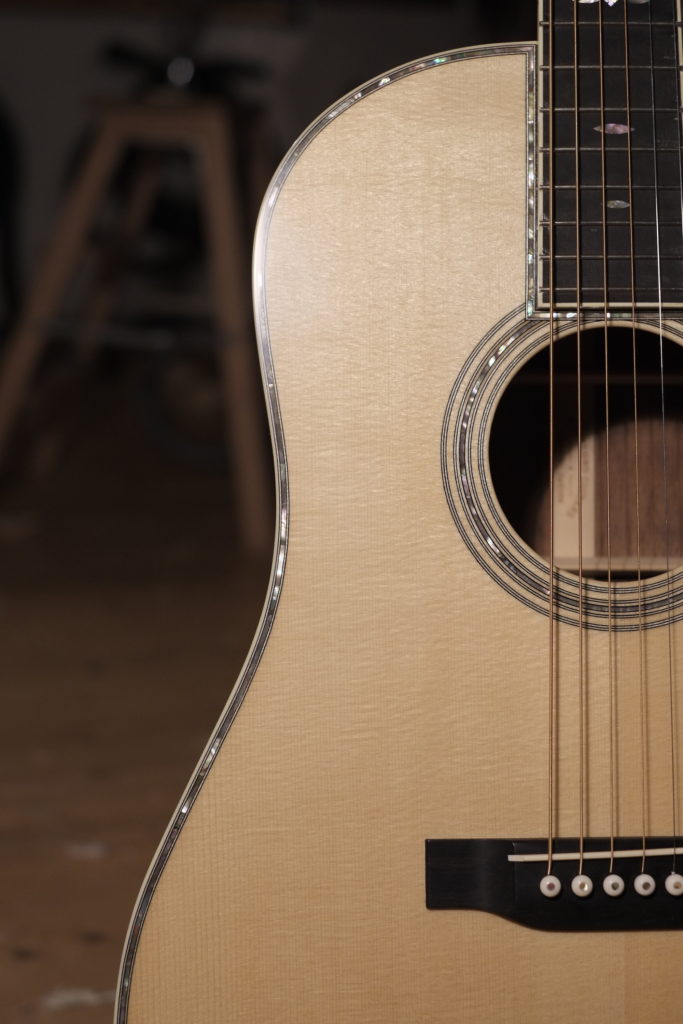
FJ: Do you have a favorite guitar that’s crossed your bench?
PM: Most of the guitars that cross my bench are my own builds. They all have their charm and I feel a strong connection to all of them. But if I could choose any guitar of those that I could take back it would probably be a 12-fret 00 with a Swedish spruce top and Rowan back and sides. The spruce is from a place in the Swedish mountains called Kittelfjäll. I lived there for a few years when I was a kid and it’s like a second home. I got a log from a local man who builds log cabins, the tree wasn’t very big but I managed to get a couple of tops out of it. The name of the man who gave me the log is Tore Gran, which is pretty funny because Gran means Spruce in Swedish. The rowan for the back, sides and neck are from my childhood home in Stenberg, close to Örnsköldsvik. Unfortunately we had to cut them down but it feels good that I could give them new life in a guitar. That’s a special guitar for me and on top of that it sounds great.
FJ: Can you tell us about your shop?
PM: My shop is located at my childhood home where my parents still live, in the barn. I built my first guitar in my student apartment and when I decided to give guitar building a real shot I moved back to my parents’ house and worked out of the basement. But I couldn’t stay there for long because orders were suddenly dropping in. So I moved my shop to the barn in 2014 and had plenty of space. But when I started getting more tools, more wood and other supplies it quickly got a little crowded. So this winter I suggested to my father that I should get rid of the sofa and the coffee table to make some more room. But as he really enjoys hanging in the shop he suggested that I’d just build a staircase and make it a two floor shop. So the day after we cut a hole in the floor and made a staircase. I do all the rough work on the bottom floor and also have my spray booth there. Now with the extra space I’ve been able to expand the coffee area with another sofa. I’m happy, my father is happy.
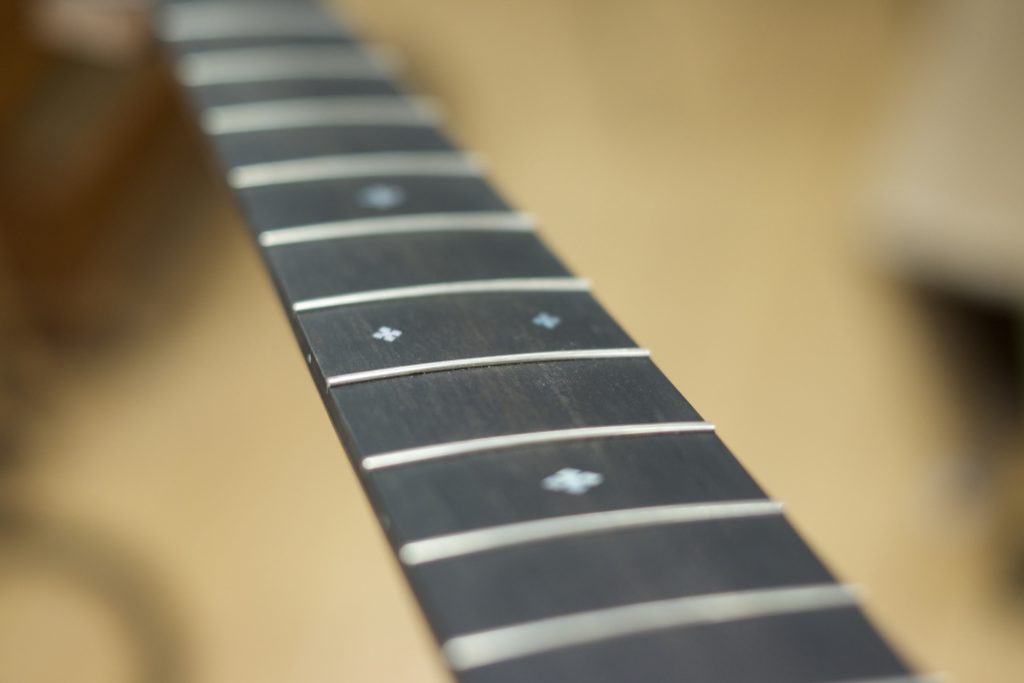
FJ: Do you have a particular philosophy about wood/materials?
PM: I could talk about wood, glue, pearl and other materials forever because I spend a lot of time and energy getting everything the way I believe is right. I’m very careful when selecting my materials because sound, look and feel all has to be there. Preferably in spades.
The trim for my guitars is mostly made in-house. I make most of my own purfling, herringbone, zipper backstrips and pearl inlays. The main reason being that what I want usually isn’t commercially available and that I like having control in all parts of the process. This takes a lot of time and probably isn’t a financially wise decision. But I like doing it and hopefully someone will notice and appreciate it in the finished guitar.
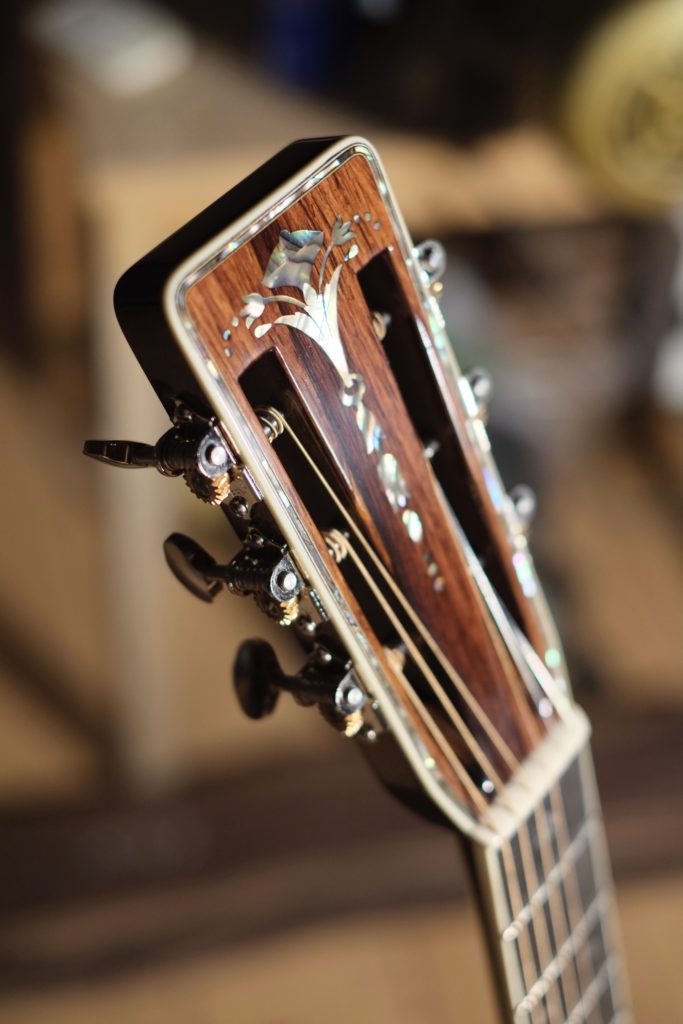
For my tops I mainly use Alpine spruce, so to make sure I get the best tops I can get I drive down to Austria and spend a whole day selecting. I usually go through about a thousand tops and find 20-30 tops that are up to my standards. I don’t do any measuring or tapping when I select them, I trust my hands and my eyes. I’m looking for light tops with a nice springy flex and no runout. The last thing I look at is grain count and I won’t reject a top because the grain isn’t tight enough. Master or AAAA grade is no guarantee that the wood has good sonic qualities and that the guitar will sound good. Actually my experience is that master tops can often be heavier, with a softer and more swampy flex. Back and side woods are pretty much graded in the same way but I don’t usually need to visit my suppliers when buying that. A few good pictures and a good contact at the supplier is usually sufficient. Another important factor for all the woods I use is stability. If it can handle my dried out workshop during winter then it usually isn’t a problem. It doesn’t happen often but if anything warps or cracks I use it for other for parts of the guitar.
When I’m in the shop selecting materials for a guitar I have an idea of a particular guitar in my head and what I want it to sound like. Selecting the wood is done by feeling it with my hands–nowhere in the process do I change anything in the construction by tapping and listening, mainly because I wouldn’t know what to listen for. I’m very impressed with builders who can do that but my hands are far more accurate than my ears I think. The selecting process doesn’t have an exact science to it. I’m just trusting my intuition, experience and the process. So far it has turned out well.
FJ: Are there any upcoming projects that you’re particularly excited about?
PM: Right now I’m very near completion of the current batch so we’ll see which one is the most exciting when I string them all up.
